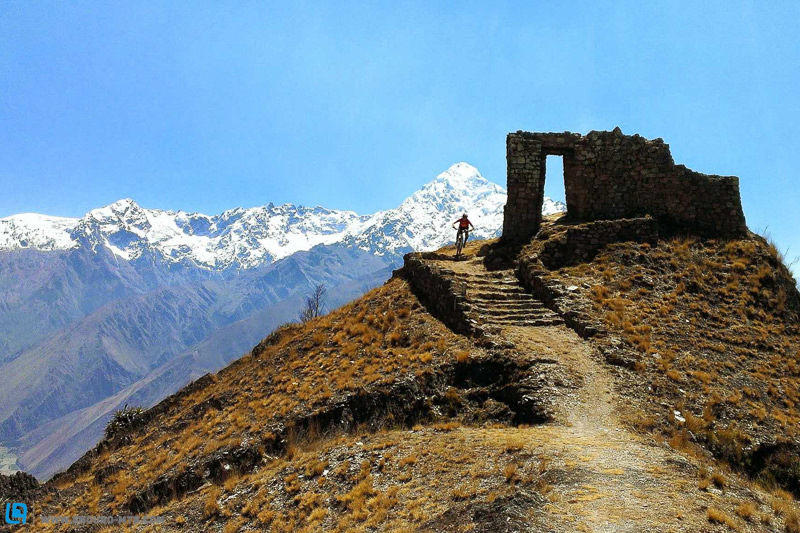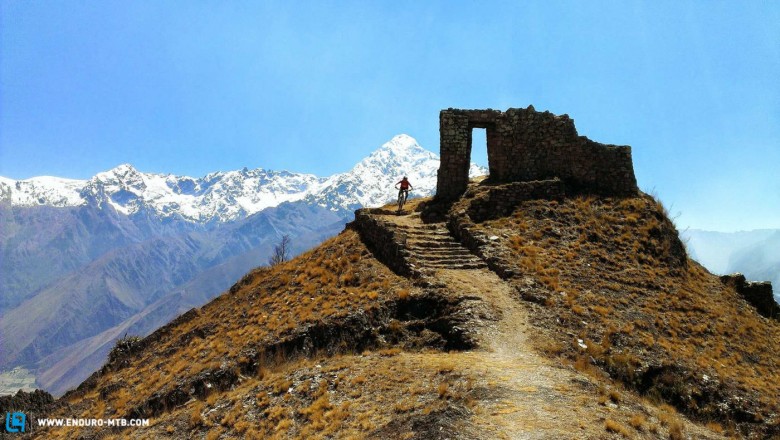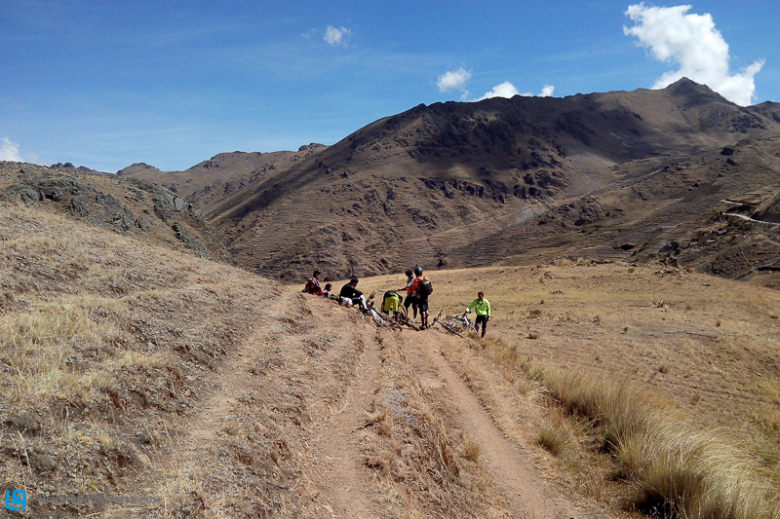Local Heroes | Cusco: The Incas Are Gone But The Trails Remain…


Hi to everyone! I’m Victor, and it has already been a year since I’m a “Bike Bum.” Before that I had an office job in Santiago, Chile, but I decided to quit and with my savings bought an Ibis Mojo HD to come back my hometown Cusco, Peru, and ride all those epic places I dreamed since I was child.

Cusco is already a very popular tourism destination with an incredible potential for mountain biking that the world doesn’t know. ENDURO Mountainbike Magazine already mentioned this as the greatest secret of South America in a previous edition, but unfortunately, the article was only about a singletrack “Via Lactea” (Milky Way) or “El Brujo” (The Wizard). Now that I have the chance, I can explain that most of the potential is based on the outstanding geography and an incredible Inca Trail network built over 600 years ago, and that has around 10,000km of singletrack in the Cusco region. On most of the trails — at least the most fun ones — you have to expect to be riding on a narrow, steep path next to a cliff with long sections of mismatched rock stairs (rock-garden skills are mandatory) and some flowy parts that can suddenly give surprises with their tight corners. Due to the nature of the tracks (stairs) we prefer to ride [more] downhill oriented — and you have to be ready for long descents. The time it takes to ride our downhill tracks ranges from 20 to 60 minutes if you are a skilled downhill rider.
The best season to enjoy the trails is between April and November. Some tracks can lose grip but the terrain remains dependable. We have a very rainy season during December to April, but if you are used to riding in more extreme weather conditions it won’t be a problem, so I can say there is availability to ride throughout the year. Also consider the altitude range in which you are going to ride. You can start the track at 4,600 meters above sea level and end at 2,800 m. While riding, you can expect some rain, and the temperature will change very quickly from cold (0 to 10°C) to warm (around 25°C). It is always good idea to carry a rain and wind jacket.

The access to the trails goes unnoticed to most people, although they are near roads (Many car routes were built over Inca trails) or even pass through some villages. So it is best to go with someone that knows the place well. Also, because during the ride, there can be some trail intersections, so instead of a nice 30-minute downhill you can end up carrying your bike for a couple of hours. The proximity to roads makes it easy to go to the top of the most known tracks with a car shuttle. (One hour of car shuttle is equivalent to 3 hours of pedaling. Remember that to have long descents you also have to climb a lot.) When farther from the road, the trail becomes little-known, even for locals, and to enjoy them you don’t have any option but to access by pedaling. Which makes the reward is even better. I can say that the best trails I did here were those that are not car accessible — and I’ve ridden a lot in my life.
Bike Recommendation
If you want to pedal, I would recommend and all-mountain/enduro bike with 160mm travel and a 2×10 drivetrain (Usually people with 1X11 drivetrains end up walking most of the climbs we have). You will enjoy a lot the downhills and be able to pedal when it is needed. If you have access to a car most of the time, a downhill bike could be very fun, but consider the fact that in the middle of the descents there can be long pedaling parts (And probably small climbs).

I think sometimes a trail can tell you an ancient story. I didn’t know until I left home and realized that these Inca trails have an incredible history, which I knew, but didn’t fully appreciate. This idea also encouraged me to come back home and learn while pedaling. Most of the tracks here were rediscovered besides the exploration in-situ, by listening to stories from old villagers in their local Quechua language and doing some research in the history books analyzing the Inca and Spanish conquerors times: their trade trends, rituals, ceremonies, religious pilgrimages, etc. All these come accompanied with astonishing landscapes (I will let pictures tell this part). I think somehow Cusco is a Wilderness Bike Park. You can have all the facilities near the city but once you go out it becomes a real adventure — or odyssey, if adventure goes wrong.
Post Ride
Cusco has a lot of biking options and trails, and even the most popular trails have some variations that allow you to do it all over again without getting bored. Ending the day with some energy left over, I would consider to be complicated, because even we, the locals, spend the post-ride with few beers (Cusqueña beer) and taking a nap in a car before coming back to the city — totally demolished. But if you some energy left, you should reserve it for the night.
Sadly, access by bike to most of the town and shops in Cusco is not allowed. The real fun starts late here, and this can definitely screw up the next day’s early morning ride. But with just a bit of control you can enjoy eeverything. Near the city’s main square there are several restaurants, pubs, bars and nightclubs that, during the tourist season, are full of foreign people willing to have a wild party time. If you are with friends then this will totally rock: a nice dinner, some drinks and the chance to dance in any nightclub.
Besides the wild parties, you can do other activities in Cusco like visiting archeological sites, museums or do other sports like trekking, kayak, rafting, horseback riding and rock climbing — or you can rent motorcycles. You don’t really need to be an expert, as there are always tours for beginners as well as those with a lot more difficulty. The same goes for mountain biking.

TRAIL DIRECTORY
Patacancha Valley (51km from 4400m to 2800m)
This valley actually has three or four trails that can be done in just one ride. A full-day, hell-of-a-ride epic. Of course it is very challenging, and you need to be very fit to complete it. If you want, you can just do some parts to keep it fun according to your own level. The complete route has a lot of variety, from multiple line options, dirt road climbs, singletrack, ancient village streets, dirt road descents with occasionally some shortcuts, small river bridges, river crossings, narrow climbs, hike-a-bikes, incredibly steep descents, rock gardens, more climbs and more descents. All while going through amazing lesser-known archeological sites until the town of Ollantaytambo.
Fairway to heaven (8.4km from 3800m to 2800m)
This might be like a mix of awesome DH lines, aggressive all-mountain and rocky trails. First part is really rocky, some DH parts and then suddenly a steep climb that takes you to a long flat trail (still rocky) that offers awesome views of the landscape, especially during June to September. Then there’s a long downhill until Moray Ruins, some dirt road and more fun with an aggressive all-mountain route that is a really narrow, narrow trail. You will find a cliff to your left side during almost all the descent. This last part can be one of the most flowing descents in all of Cusco, but needs a lot of balance to keep you on your line.
Huchuy Qosqo (35km starts at 3300m climbs until 4400m descents to 2900m)
This place is an ancient ruin that only can be accessed by walking or riding a mountain bike. There are several trails to get there, and for each one you need to be a fit rider. I recommend any trail in the Cusco (or Chinchero) to Calca direction. All trails really will impress you because of the awesome landscapes and because they will show you different architectural aspects of the Inca trails. Once you get to the ruins you also have the option to continue by different trails to Calca or Lamay town.

Sappatoq-Lamay (13.6Km from 4200m to 2900m)
This might be the most flowing trail in Cusco. It’s also is the one with the most deviations. Some practice runs will help before you can do your full-blast ride. The problem is that to get from Lamay town to the top takes one hour by car or three riding. But once you know the trail it’s really fun. Narrow singletrack that seems endless and littered with rock gardens and stairs that you enter with a lot of speed and little control. Thanks to the vegetation your mind can avoid the psychological distraction of the small cliff to your right. This must be one of the most bike oriented routes, so total excitement is guaranteed on this track.
Salkantay Community (16km starts at 3400 climbs until 4000m descents to 3400m)
Located next to the Sacsayhuaman archeological site, which is in the upper part of the Cusco city, you’ll find a dirt road that goes to Salkantay Community. From this road a lot of descents can be started. So if you are in a hurry, this is where you can find your small bike ride of the day. Just 30 minutes is needed, including climbing and downhill. But since we like to go long for fun I suggest climbing to the top (1 hour pedaling). An incredible track starts from there, and like all the trails here it has three options to start but they all eventually join the same line. As you get closer to the finish, this trail also allows you to take different lines to get to the bottom of the trail at Cusco city. You end just blocks from Cusco’s main square where you have a lot of things to eat and drink at your disposal.

Words, Photos: Victor Espinoza
Did you enjoy this article? If so, we would be stoked if you decide to support us with a monthly contribution. By becoming a supporter of ENDURO, you will help secure a sustainable future for high-quality mountain bike journalism. Click here to learn more.








